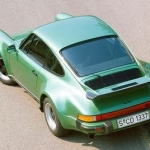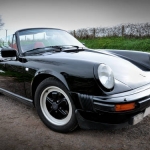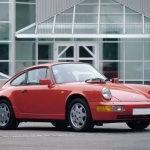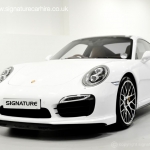 Although many say that the official history of Porsche began in 1948, the seeds were sewn long before that. In 1931 Ferdinand Porsche founded “Dr. Ing. h. c. F. Porsche GmbH” in Stuttgart, a company that did not make cars, but did offer development and consulting work to other motor vehicle businesses. Porsche formed his company logo by combining the coat of arms of the Free People’s State of Württemberg, the coat of arms of Stuttgart and his family name – take a look at a modern badge and you’ll see all of those elements still present.
Although many say that the official history of Porsche began in 1948, the seeds were sewn long before that. In 1931 Ferdinand Porsche founded “Dr. Ing. h. c. F. Porsche GmbH” in Stuttgart, a company that did not make cars, but did offer development and consulting work to other motor vehicle businesses. Porsche formed his company logo by combining the coat of arms of the Free People’s State of Württemberg, the coat of arms of Stuttgart and his family name – take a look at a modern badge and you’ll see all of those elements still present.
One of Porsche’s first projects was to design a ‘car of the people’ for the German government or, as it’s translated, a ‘volkswagen’. The result of their designs became one of the most famous cars of all time – the Volkswagen Beetle. Afterwards, during WW2, Porsche turned their engineering expertise to tank design – although they lost out on major contracts to the rival company that eventually produced the Tiger I and Tiger II.

Due to his earlier work, Ferdinand had become Chairman of the Board of Management of Volkswagen, but after Germany was vanquished by the Allies in WWII, Volkswagen was taken over by the British. Worse was to follow – at the end of 1945 Ferdinand was arrested for war crimes, and imprisoned for 20 months. During this time his son, Ferry Porsche, decided to build his own car and bring something to the market that he himself would actually want to buy. Steering the family company through a difficult period, he set his team to work in a small sawmill in Gmünd, Austria, where they produced what would later become the Porsche 356.
To produce the 356’s body, Ferry founded Porsche Konstruktionen GmbH, and the 356 was road certified in 1948. The car had a 40 horsepower, rear mounted Beetle engine, and was noted for its comfort and reliability. Bodywork was later taken over by a different company, and in 1952 Porsche continued its expansion by building an assembly plant opposite Werk 1 (the first Porsche building). The main road there is now known as Porschestrasse.
In the mid 1950s, Porsche began introducing its own engines, and used them in more powerful evolutions of the 356. This car was to define both the Porsche brand and many people’s idea of supercar perfection. Although models today have little in common with the original, bar basic configuration and styling, the idea of style and speed in one compact, soul-stirring Porsche package remains.
Variations over time have included the 911 S in 1967, the 911 Turbo in 1974, the 911 Cabriolet in 1983, and the first all-wheel drive 911 Carrera 4 in 1990. The current version is the 991 series, which was introduced in 2012.The landmark moment, however, came in 1964, when the Porsche 911 was born. Porsche had had success with racing its cars ever since it had started building them (they’ve won Le Mans over 50 times), and it had used technological knowledge gained through racing to initiate a major redesign of the 356.
The resulting car, an air-cooled, rear-engined sports car with a six-cylinder boxer engine, featured a body shell design by Ferry Porsche’s son, Ferdinand Porsche. It was originally intended to be called the 901, but Peugeot had trademarked all of the ‘x0x’ names, so it became the 911.On the company front, Porsche changed its business model in 1972, becoming a public company and moving away from the family-owned model. Many of the Porsche family left and went their separate but successful ways: Ferdinand Porsche (junior), for example, set up Porsche Design, which now has an international reputation for creating sophisticated luxury items such as watches and furniture.

At the evolved Porsche meanwhile, a decision was taken to introduce front-engine models, starting with the 924 in 1976. The final evolutions of these, the 968 and the 928, were retired in 1995 so that Porsche could concentrate both on the 911 and the Boxster, which was introduced in 1996.
Although Porsche has since branched out into the micro SUV market with the Cayenne and the Macan, many people still associate it with those small, punchy supercars that first made their global reputation. To try either style of Porsche for yourself, contact our Experience Centre for details of the latest models you can hire.




